Rebuilding Classes
NOTE: Click on an instructor's name to see a bio.
Keyboard restoration or keyboard replacement: the pros and cons of
both
Michael A. Morvan
Michael A. Morvan, Blackstone Valley Piano
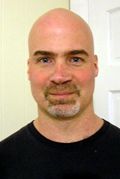 Mike
Morvan has applied machinist skills to the art of key covering and fabrication,
and he employs nearly forgotten techniques and procedures once standard in
key manufacturing. With his machinist background, state-of-the-art milling
machines, and original Pratt & Read keyboard tooling (acquired from Frank
Stopa), he provides repair and restoration techniques that incorporate traditional
key manufacturing procedures. His company Blackstone Valley Piano (www.pianoandorgankeys.com)
continues to offer high quality keyboard and keyframe restoration and fabrication
for organ and piano technicians nationwide. Mike has made a leap into the future
and added a CNC router. This modern equipment has greatly improved the quality
of Mike’s keyboard restoration and fabrication services. It has also enabled
Blackstone Valley Piano to provide other much needed services and products
to the trade: fabrication of custom buttons, mortise inserts, soundboard cauls,
rib shaping cauls, action parts, jigs and fixtures, as well as case parts that
supply houses and other manufacturers can’t provide.
Mike
Morvan has applied machinist skills to the art of key covering and fabrication,
and he employs nearly forgotten techniques and procedures once standard in
key manufacturing. With his machinist background, state-of-the-art milling
machines, and original Pratt & Read keyboard tooling (acquired from Frank
Stopa), he provides repair and restoration techniques that incorporate traditional
key manufacturing procedures. His company Blackstone Valley Piano (www.pianoandorgankeys.com)
continues to offer high quality keyboard and keyframe restoration and fabrication
for organ and piano technicians nationwide. Mike has made a leap into the future
and added a CNC router. This modern equipment has greatly improved the quality
of Mike’s keyboard restoration and fabrication services. It has also enabled
Blackstone Valley Piano to provide other much needed services and products
to the trade: fabrication of custom buttons, mortise inserts, soundboard cauls,
rib shaping cauls, action parts, jigs and fixtures, as well as case parts that
supply houses and other manufacturers can’t provide.
The keyboard is a major focal point of the piano and the player’s physical
connection with the instrument. It should also invite and inspire the
player. Also, the keyboard is the foundation of a well playing action.
In this class we will go over a pragmatic approach to deciding whether
to replace a keyboard with a new one or restore the original. There are
many factors involved with both options. For restoration of the original
keyboard we will cover keytop replacement options for naturals and sharps,
button and mortise replacement, rebushing, pin replacement, keyframe
restoration, and the building up of tops, sides and fronts to correct
for wear or novice repairs. For replacing a keyboard, we will look at
action geometry analysis, keystick materials, keybutton and shoe materials,
keytop options for the naturals and sharps, the keyframe, and capstans
and backchecks. We will also touch on our use of CAD/CAM (computer aided
design/ computer aided manufacture) and implementing CNC technology in
piano keyboard restoration, keyboard fabrication, and fabrication of
related parts.
Nick's "Not-really-a-soundboard-class" Soundboard Class
Nick Gravagne, RPT
Nick Gravagne, RPT
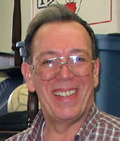 Nick Gravagne, RPT has been a prolific writer for the Piano
Technicians Journal,
most known for his popular and long-running “Good Vibrations” series, and has
been a frequent teacher at P.T.G. National and State conventions, and many
regional seminars. A technician since 1973, and an RPT since 1975, much of
Nick's business currently revolves around rebuilding and soundboard manufacture
for the trade, and is active in concert prep and maintenance of fine grand
pianos. Nick has also served as the Technical Service Manager for Kawai America
Pianos. His credentials and awards include a BA from William Paterson University,
an AST in Mechanical Engineering via Penn State, and the PTG Member of Note
Award.
Nick Gravagne, RPT has been a prolific writer for the Piano
Technicians Journal,
most known for his popular and long-running “Good Vibrations” series, and has
been a frequent teacher at P.T.G. National and State conventions, and many
regional seminars. A technician since 1973, and an RPT since 1975, much of
Nick's business currently revolves around rebuilding and soundboard manufacture
for the trade, and is active in concert prep and maintenance of fine grand
pianos. Nick has also served as the Technical Service Manager for Kawai America
Pianos. His credentials and awards include a BA from William Paterson University,
an AST in Mechanical Engineering via Penn State, and the PTG Member of Note
Award.
A fascinating study of how a soundboard works and its effect on piano
tone, replete with “Mr. Wizard” type props and audio files of impedance
mixing and matching. Since this material probes into piano tone, everyone
will benefit, not just piano rebuilders. These audio files are accompanied
with easy-to-read graphs and all will be played and viewed in class through
a colorful Power Point Presentation.
Evaluating Old Soundboards and Understanding Soundboard Crown
Del Fandrich
Del Fandrich, RPT
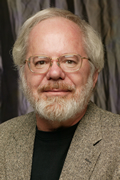 Delwin
D Fandrich, piano designer and builder, has been actively involved in the piano
industry since the early 1960s and an active member of the Piano Technicians
Guild since 1972. Fandrich worked as service manager for Oregon’s largest Steinway
dealer, a position bringing him in contact with a variety of the major touring
concert pianists. Increasingly dissatisfied with the performance of most new
pianos of the time, he began studying piano design and manufacturing techniques,
ultimately becoming Director of Piano Research and Development for the Baldwin
Piano & Organ Company. In 1989 he became America’s only independent design
and manufacturing consultant at the time. He designed and manufactured the
48” Fandrich Vertical Piano, which was labeled “revolutionary” by Larry Fine
in The
Piano Book, third ed. Utilizing his patented soundboard system, this piano
has been called one of the best vertical pianos of its size ever built. Fandrich
has written extensively on the subjects of piano design, manufacture, and acoustics
including a long-running series of articles for the Piano
Technicians Journal, “The Designer’s Notebook.” Fandrich lectures extensively
on piano technology and design topics in the U.S., Europe, Australia, and China.
Over the past two year Fandrich has been working with Young Chang redesigning
their entire product line and refining their manufacturing systems to improve
build quality and performance consistency. Fandrich also designs and remanufactures
pianos at his plant in Centralia, Washington. www.fandrichpiano.com
Delwin
D Fandrich, piano designer and builder, has been actively involved in the piano
industry since the early 1960s and an active member of the Piano Technicians
Guild since 1972. Fandrich worked as service manager for Oregon’s largest Steinway
dealer, a position bringing him in contact with a variety of the major touring
concert pianists. Increasingly dissatisfied with the performance of most new
pianos of the time, he began studying piano design and manufacturing techniques,
ultimately becoming Director of Piano Research and Development for the Baldwin
Piano & Organ Company. In 1989 he became America’s only independent design
and manufacturing consultant at the time. He designed and manufactured the
48” Fandrich Vertical Piano, which was labeled “revolutionary” by Larry Fine
in The
Piano Book, third ed. Utilizing his patented soundboard system, this piano
has been called one of the best vertical pianos of its size ever built. Fandrich
has written extensively on the subjects of piano design, manufacture, and acoustics
including a long-running series of articles for the Piano
Technicians Journal, “The Designer’s Notebook.” Fandrich lectures extensively
on piano technology and design topics in the U.S., Europe, Australia, and China.
Over the past two year Fandrich has been working with Young Chang redesigning
their entire product line and refining their manufacturing systems to improve
build quality and performance consistency. Fandrich also designs and remanufactures
pianos at his plant in Centralia, Washington. www.fandrichpiano.com
How to evaluate an old soundboard to determine if there is any musical
life left in it, how to make and read a soundboard map that will show
if there is any useful crown left in the soundboard and how any residual
string bearing is affecting the soundboard system, how to evaluate an
existing string scale and soundboard design to determine the piano’s
performance potential, and what this all means. Among the questions discussed:
What is the function of crown in an old—or new—soundboard system? How
much “crown” does a soundboard need? What, if anything, does crown really
do? and, Does the soundboard system really need crown?
Recapping the Vertical Bass Bridge Without Removing the Plate
Chris Bolduc
Christian Bolduc
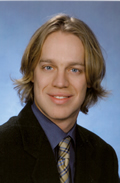 Christian
Bolduc is a technician specialized in soundboards and pinblocks (belly man). Christian
is a cabinet and furniture expert. He studied cabinet making at the Ecole
du Meuble de Victoriaville and spent one year at the Schimmel factory in Braunschweig,
Germany studying piano structure and design. He is a constant searcher for
new ideas and methods to make your rebuilding projects easier. Christian is
also the factory manager at Pianos André Bolduc. www.pianobolduc.com
Christian
Bolduc is a technician specialized in soundboards and pinblocks (belly man). Christian
is a cabinet and furniture expert. He studied cabinet making at the Ecole
du Meuble de Victoriaville and spent one year at the Schimmel factory in Braunschweig,
Germany studying piano structure and design. He is a constant searcher for
new ideas and methods to make your rebuilding projects easier. Christian is
also the factory manager at Pianos André Bolduc. www.pianobolduc.com
An easy way to replace split bridge caps on uprights without using epoxy
or other glues to fix bridge pin problems. Learn how to build a jig over
the plate to remove the old cap and glue the new one. This technique
can also be applied to grand pianos. DVD available.
Practical Geometry for Piano Technicians
Anne Garee, RPT
Anne Garee, RPT
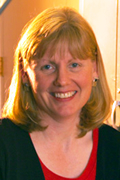 Anne
Garee, Program Director for Piano Technology, has enjoyed her career as piano
technician at the Florida State University College of Music since 1983. She
joined the faculty in 2004 and directs the Master of Arts in Piano Technology
program mentoring trained piano technicians in one of the most comprehensive
colleges of music in the nation. She holds a Bachelor of Music degree in Piano
Performance and completed a three year apprenticeship program for the Certificate
in Piano Technology from the Bowling Green State University in Ohio. A Registered
Piano Technician with the Piano Technicians Guild, she is an active clinician
both in the U.S. and abroad. www.music.fsu.edu
Anne
Garee, Program Director for Piano Technology, has enjoyed her career as piano
technician at the Florida State University College of Music since 1983. She
joined the faculty in 2004 and directs the Master of Arts in Piano Technology
program mentoring trained piano technicians in one of the most comprehensive
colleges of music in the nation. She holds a Bachelor of Music degree in Piano
Performance and completed a three year apprenticeship program for the Certificate
in Piano Technology from the Bowling Green State University in Ohio. A Registered
Piano Technician with the Piano Technicians Guild, she is an active clinician
both in the U.S. and abroad. www.music.fsu.edu
This 90 minute class gives participants the opportunity to practice
measuring techniques for grand action geometry analysis. Lines of convergence,
action spread, stack height, action ratio, and additional fore finishing
topics will be explored. Improve your grand action renovation projects
by establishing good measuring protocols. Class limit: 20
Grand Action Geometry and Ratios: You Can't Get Something for Nothing
Rick Wheeler, RPT
Rick Wheeler
 Rick
Wheeler, founder of Roseland Piano Company, has been a piano technician for
over 40 years. His background includes decades of hands-on piano rebuilding
and restoration work, plus many years of manufacturing experience in quality
control, production management, and new product development. Roseland Piano
specializes in the manufacture of replacement piano keysets for the industry. www.roselandpiano.com
Rick
Wheeler, founder of Roseland Piano Company, has been a piano technician for
over 40 years. His background includes decades of hands-on piano rebuilding
and restoration work, plus many years of manufacturing experience in quality
control, production management, and new product development. Roseland Piano
specializes in the manufacture of replacement piano keysets for the industry. www.roselandpiano.com
Rick shares his experience and techniques for analyzing the action geometry
of the grand piano action. It is geared toward the novice or intermediate
technician, with an emphasis on what can be expected from a given piano
action, and what changes could be made to improve it's performance.
The Grand Action: Assessment to Touch Design
Robert Marinelli, RPT
and Anne Garee, RPT
Robert Marinelli, RPT
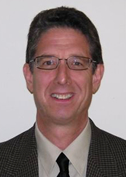 Robert
Marinelli, founder and president of Pianotek Supply Company, has been a Registered
Piano Technician since 1976. He studied piano at Wayne State University with
Boris Maximovich before beginning his technical career. One of the most unique
opportunities in his early technical training was working in a furniture repair
shop for Henry Ford’s personal cabinetmaker. His work as a concert technician
over the years has included the Detroit Symphony Orchestra and the C & A
department of the Hammell Music Steinway dealership. Bob owned and operated
a piano rebuilding and refinishing shop in Detroit, as well as running his
own piano tuning business. At Pianotek, Bob is involved with new product development
and with the manufacturing of replacement keyboards and action restoration.
He is an active clinician at international and regional conferences, as well
as at schools in the U.S. and abroad. www.pianoteksupply.com
Robert
Marinelli, founder and president of Pianotek Supply Company, has been a Registered
Piano Technician since 1976. He studied piano at Wayne State University with
Boris Maximovich before beginning his technical career. One of the most unique
opportunities in his early technical training was working in a furniture repair
shop for Henry Ford’s personal cabinetmaker. His work as a concert technician
over the years has included the Detroit Symphony Orchestra and the C & A
department of the Hammell Music Steinway dealership. Bob owned and operated
a piano rebuilding and refinishing shop in Detroit, as well as running his
own piano tuning business. At Pianotek, Bob is involved with new product development
and with the manufacturing of replacement keyboards and action restoration.
He is an active clinician at international and regional conferences, as well
as at schools in the U.S. and abroad. www.pianoteksupply.com
Anne Garee, RPT
 Anne
Garee, Program Director for Piano Technology, has enjoyed her career as piano
technician at the Florida State University College of Music since 1983. She
joined the faculty in 2004 and directs the Master of Arts in Piano Technology
program mentoring trained piano technicians in one of the most comprehensive
colleges of music in the nation. She holds a Bachelor of Music degree in Piano
Performance and completed a three year apprenticeship program for the Certificate
in Piano Technology from the Bowling Green State University in Ohio. A Registered
Piano Technician with the Piano Technicians Guild, she is an active clinician
both in the U.S. and abroad. www.music.fsu.edu
Anne
Garee, Program Director for Piano Technology, has enjoyed her career as piano
technician at the Florida State University College of Music since 1983. She
joined the faculty in 2004 and directs the Master of Arts in Piano Technology
program mentoring trained piano technicians in one of the most comprehensive
colleges of music in the nation. She holds a Bachelor of Music degree in Piano
Performance and completed a three year apprenticeship program for the Certificate
in Piano Technology from the Bowling Green State University in Ohio. A Registered
Piano Technician with the Piano Technicians Guild, she is an active clinician
both in the U.S. and abroad. www.music.fsu.edu
Participate in a hands-on Pianotek Master class in grand action renovation.
Remedy problem actions, learn methods of analysis, diagnosis, and design,
and apply action geometry, friction analysis, and final touch design.
Teams interpret measurements to identify action ratio for component balancing.
Gain a keen understanding of cause and effect of choosing replacement
parts. Small groups, personalized attention and multiple instructors. All
day class. Limit: 30 people.
Upright Hammer Hanging
Vince Mrykalo, RPT
Vince Mrykalo, RPT
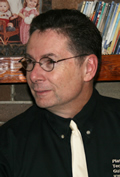 Vince
Mrykalo, RPT, began learning to tune and repair pianos in April of 1972 and
started tuning for a Baldwin dealer in Howell, NJ in January of 1973. In 1976
he joined the PTG as an Apprentice, and became a Craftsman in 1978, receiving
his 25 year pin in 2003. In 2006 at the Rochester, NY Convention, he received
the Crowl-Travis Member of Note Award. Vince has trained at the Baldwin Factory
in Conway AR in 1983 under Jack Krefting, Willard Sims, and Ben McKlveen. He
attended the Yamaha Disklavier school in 1993 working under Brian DeTar and
Laroy Edwards, completed all five Theodore Steinway & Sons factory training
session between 1992 and 2002 under Scott Jones, and later Eric Schandall,
and went through the Shigeru Kawai training in 2004 under Don Mannino and Terri
Otake. He has taught at various PTG Conventions since 1990 and has been a University
technician since 1990. He is now the piano technician at the University of
Utah, a position he has held since June 2002, and operates his own rebuilding
shop and piano service. www.mrykalopiano.com
Vince
Mrykalo, RPT, began learning to tune and repair pianos in April of 1972 and
started tuning for a Baldwin dealer in Howell, NJ in January of 1973. In 1976
he joined the PTG as an Apprentice, and became a Craftsman in 1978, receiving
his 25 year pin in 2003. In 2006 at the Rochester, NY Convention, he received
the Crowl-Travis Member of Note Award. Vince has trained at the Baldwin Factory
in Conway AR in 1983 under Jack Krefting, Willard Sims, and Ben McKlveen. He
attended the Yamaha Disklavier school in 1993 working under Brian DeTar and
Laroy Edwards, completed all five Theodore Steinway & Sons factory training
session between 1992 and 2002 under Scott Jones, and later Eric Schandall,
and went through the Shigeru Kawai training in 2004 under Don Mannino and Terri
Otake. He has taught at various PTG Conventions since 1990 and has been a University
technician since 1990. He is now the piano technician at the University of
Utah, a position he has held since June 2002, and operates his own rebuilding
shop and piano service. www.mrykalopiano.com
The skill by which people have built pianos in factories should encourage
piano technicians to likewise duplicate fine workmanship when rebuilding
or restoring vertical and grand pianos. Since a substantial contribution
to piano tone depends on its hammers and action, and finding that a piano
is generally up to standard except for its hammers and action, this class
will present in detail, one method of restoring the volume and tone of
the upright piano by replacing the hammers, shanks, and butts.
Wessell, Nickel & Gross: Working with WNG Hard Bushings
Bruce Clark
and Mark Burgett
Bruce Clark
 Bruce
Clark grew up working in the shop at his father’s piano store in Kansas. After
college, he began his associations with several manufacturers including Falcone
and the Mason & Hamlin division of the Aeolian American
Corp. Today he is a senior Design Engineer at Mason & Hamlin and Wessell,
Nickel & Gross. Among other achievements, Bruce was the lead design engineer
on the new Mason & Hamlin AA-64, B-54 and CC-94, and also served as one
of the lead design engineers for the Wessell, Nickel & Gross Composite
Action project. www.wessellnickelandgross.com
Bruce
Clark grew up working in the shop at his father’s piano store in Kansas. After
college, he began his associations with several manufacturers including Falcone
and the Mason & Hamlin division of the Aeolian American
Corp. Today he is a senior Design Engineer at Mason & Hamlin and Wessell,
Nickel & Gross. Among other achievements, Bruce was the lead design engineer
on the new Mason & Hamlin AA-64, B-54 and CC-94, and also served as one
of the lead design engineers for the Wessell, Nickel & Gross Composite
Action project. www.wessellnickelandgross.com
Mark Burgett
Mark Burgett started his career in the piano business in 1981 with his brothers Gary and Kirk under the tutoring of Paul Magee in the Sacramento Chapter. In 1988 when PianoDisc was established, Mark was active in training technicians in installation, technical support and development and testing of new product. In 2007 when the company started development of the composite action parts under the name of Wessell, Nickel and Gross, Mark took an active part of educating, marketing and quality control this revolutionary product.
The benefits and methods of WNG hard bushings will be explained in this
class.Center pin removal, understanding WNG center pin sizes, techniques
for fitting a new center pin and assembly procedures will be covered.
Wessell, Nickel & Gross: Complete Action Replacement
Bruce Clark
and Mark Burgett
Bruce Clark
 Bruce
Clark grew up working in the shop at his father’s piano store in Kansas. After
college, he began his associations with several manufacturers including Falcone
and the Mason & Hamlin division of the Aeolian American
Corp. Today he is a senior Design Engineer at Mason & Hamlin and Wessell,
Nickel & Gross. Among other achievements, Bruce was the lead design engineer
on the new Mason & Hamlin AA-64, B-54 and CC-94, and also served as one
of the lead design engineers for the Wessell, Nickel & Gross Composite
Action project. www.wessellnickelandgross.com
Bruce
Clark grew up working in the shop at his father’s piano store in Kansas. After
college, he began his associations with several manufacturers including Falcone
and the Mason & Hamlin division of the Aeolian American
Corp. Today he is a senior Design Engineer at Mason & Hamlin and Wessell,
Nickel & Gross. Among other achievements, Bruce was the lead design engineer
on the new Mason & Hamlin AA-64, B-54 and CC-94, and also served as one
of the lead design engineers for the Wessell, Nickel & Gross Composite
Action project. www.wessellnickelandgross.com
Mark Burgett
Mark Burgett started his career in the piano business in 1981 with his brothers Gary and Kirk under the tutoring of Paul Magee in the Sacramento Chapter. In 1988 when PianoDisc was established, Mark was active in training technicians in installation, technical support and development and testing of new product. In 2007 when the company started development of the composite action parts under the name of Wessell, Nickel and Gross, Mark took an active part of educating, marketing and quality control this revolutionary product.
Sometimes a piano needs a completely new action stack. WNG has addressed
this need with the new WNG Top Action and this class. Most rebuilders
learned that "Action Work" means putting everything back as
it was. With a new action, this is no longer possible. This class teaches
the basics required to replace an entire action. Topics covered include:
- How to create a scale stick from an old action rail.
- When to create
a scale stick from the piano itself.
- How to select the action features
you need.
- How to order the top action.
- How to create setup specifications.
- How to install the action on the key frame.
Wessell, Nickel & Gross: Installing Hammers on WNG Composite Shanks
Mark Burgett
and Bruce Clark
Mark Burgett
Mark Burgett started his career in the piano business in 1981 with his brothers Gary and Kirk under the tutoring of Paul Magee in the Sacramento Chapter. In 1988 when PianoDisc was established, Mark was active in training technicians in installation, technical support and development and testing of new product. In 2007 when the company started development of the composite action parts under the name of Wessell, Nickel and Gross, Mark took an active part of educating, marketing and quality control this revolutionary product.
Bruce Clark
 Bruce
Clark grew up working in the shop at his father’s piano store in Kansas. After
college, he began his associations with several manufacturers including Falcone
and the Mason & Hamlin division of the Aeolian American
Corp. Today he is a senior Design Engineer at Mason & Hamlin and Wessell,
Nickel & Gross. Among other achievements, Bruce was the lead design engineer
on the new Mason & Hamlin AA-64, B-54 and CC-94, and also served as one
of the lead design engineers for the Wessell, Nickel & Gross Composite
Action project. www.wessellnickelandgross.com
Bruce
Clark grew up working in the shop at his father’s piano store in Kansas. After
college, he began his associations with several manufacturers including Falcone
and the Mason & Hamlin division of the Aeolian American
Corp. Today he is a senior Design Engineer at Mason & Hamlin and Wessell,
Nickel & Gross. Among other achievements, Bruce was the lead design engineer
on the new Mason & Hamlin AA-64, B-54 and CC-94, and also served as one
of the lead design engineers for the Wessell, Nickel & Gross Composite
Action project. www.wessellnickelandgross.com
Hammers are easy to install on composite shanks. There are some important
differences. If you can glue hammers on wooden shanks, you are 90% there.
You will leave this class able to glue hammers on composite shanks with
confidence. Topics in the class include:
- Basic installation
- Basic
hammer preparation
- Traveling • Gluing (With CA glue)
- Shank trimming
- Back of hammer machining
- Shop safety
Replacing Grand Action Parts
Melanie Brooks
A focus on straightforward methods for selecting replacement action
parts for a complete action rebuild, necessary measurements, what to
watch out for, using parts kits, and fast, efficient ways to effectively
control weight and touch.
Steinway Action Rebuilding
Kent Webb
Kent Webb - Manager, Technical Service and Support, Steinway & Sons
 Kent
is the Manager of Technical Service and Support for Steinway & Sons. In
this position, Kent oversees and conducts the Steinway Training Academy. He
also works closely with All-Steinway Schools and Institutions to develop and
maintain service strategies and resources. In addition, Kent coordinates service
literature and publications, works closely with Festival Events, and participates
extensively in educational events. Kent Webb has been involved in the piano
industry for over 30 years as a concert technician and rebuilder. In addition
to his position at Steinway & Sons, Kent served as a contributing writer
and consultant for both editions of The Encyclopedia of Keyboard Instruments (Garland
Press, NY, NY) supplying articles on rebuilding, regulation, tuning, and piano
design. He also served as technical columnist for the Soundboard,
a publication for music educators in the United States with a circulation of
over 50,000. Prior to his position with Steinway, Kent was the National Service
Manager for Baldwin Piano Company for 10 years. Kent also was on the Board
of Advisors for the School of Piano Technology at Western Iowa Tech and the
Board of Industry Advisors for the University of Western Ontario for their
School of Piano Technology. Kent has taught at over 400 local, regional, national,
and international events. www.steinway.com
Kent
is the Manager of Technical Service and Support for Steinway & Sons. In
this position, Kent oversees and conducts the Steinway Training Academy. He
also works closely with All-Steinway Schools and Institutions to develop and
maintain service strategies and resources. In addition, Kent coordinates service
literature and publications, works closely with Festival Events, and participates
extensively in educational events. Kent Webb has been involved in the piano
industry for over 30 years as a concert technician and rebuilder. In addition
to his position at Steinway & Sons, Kent served as a contributing writer
and consultant for both editions of The Encyclopedia of Keyboard Instruments (Garland
Press, NY, NY) supplying articles on rebuilding, regulation, tuning, and piano
design. He also served as technical columnist for the Soundboard,
a publication for music educators in the United States with a circulation of
over 50,000. Prior to his position with Steinway, Kent was the National Service
Manager for Baldwin Piano Company for 10 years. Kent also was on the Board
of Advisors for the School of Piano Technology at Western Iowa Tech and the
Board of Industry Advisors for the University of Western Ontario for their
School of Piano Technology. Kent has taught at over 400 local, regional, national,
and international events. www.steinway.com
Kent will discuss the current parts production and the recommended applications
for maximizing repairs utilizing Steinway parts. Interchangeability,
geometry, and comparisons of Hamburg parts and New York parts will be
examined. Customers want the assurance of genuine Steinway parts in their
pianos that are repaired or rebuilt. Don’t miss this chance to gain valuable
information that will add to the quality and value of the repairs and
restorations you perform.
The Patented TouchRail
Scott Jones, RPT
Scott Jones, RPT
 Scott
Jones began his career as a piano technician in 1984, after receiving a BM
degree in music composition from the University of North Carolina, Chapel Hill.
From 1989 to 2001, he was employed by Steinway & Sons, New York, where
he held positions as concert technician, technical instructor and product development
researcher. From 2001 to present, he developed the PitchLock string coupler
and TouchRail systems, both being demonstrated nationwide. Scott has authored
3 U.S. patents, most recently for the TouchRail. www.pitchlock.com
Scott
Jones began his career as a piano technician in 1984, after receiving a BM
degree in music composition from the University of North Carolina, Chapel Hill.
From 1989 to 2001, he was employed by Steinway & Sons, New York, where
he held positions as concert technician, technical instructor and product development
researcher. From 2001 to present, he developed the PitchLock string coupler
and TouchRail systems, both being demonstrated nationwide. Scott has authored
3 U.S. patents, most recently for the TouchRail. www.pitchlock.com
Precisely adjust grand piano touchweight in minutes with no cutting
or drilling. With hundreds sold nationwide, many professional technicians
know that the TOUCHRAIL™ from PitchLock Inc. offers an elegant
solution for heavy touch weight in grand pianos. Designed for easy installation
and adjustment , the TouchRail can reduce key downweight by as much as
10 grams with virtually no loss of low key repetition. If you haven’t
seen this yet, you’re missing a fascinating business opportunity. Learn
more at www.pitchlock.com
Centerpinning, Traveling and Squaring
Debra Cyr, RPT
Debra Cyr, RPT
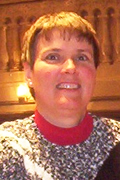 Debbie
learned piano tuning and repairs in 1990 as an apprentice as well as through
a correspondence course and then attended the rebuilding program at the North
Bennet Street School in Boston. She is an instructor at the North Bennet
Street School, as well as a rebuilder, and has an extensive private tuning
clientele. Debbie is past president of the Boston Piano Technicians
Guild and teaches at seminars and conventions on the local, regional and national
levels. www.nbss.org
Debbie
learned piano tuning and repairs in 1990 as an apprentice as well as through
a correspondence course and then attended the rebuilding program at the North
Bennet Street School in Boston. She is an instructor at the North Bennet
Street School, as well as a rebuilder, and has an extensive private tuning
clientele. Debbie is past president of the Boston Piano Technicians
Guild and teaches at seminars and conventions on the local, regional and national
levels. www.nbss.org
A 30 minute review of centerpinning, traveling and squaring, followed
by an hour of hands-on.
 Mike
Morvan has applied machinist skills to the art of key covering and fabrication,
and he employs nearly forgotten techniques and procedures once standard in
key manufacturing. With his machinist background, state-of-the-art milling
machines, and original Pratt & Read keyboard tooling (acquired from Frank
Stopa), he provides repair and restoration techniques that incorporate traditional
key manufacturing procedures. His company Blackstone Valley Piano (
Mike
Morvan has applied machinist skills to the art of key covering and fabrication,
and he employs nearly forgotten techniques and procedures once standard in
key manufacturing. With his machinist background, state-of-the-art milling
machines, and original Pratt & Read keyboard tooling (acquired from Frank
Stopa), he provides repair and restoration techniques that incorporate traditional
key manufacturing procedures. His company Blackstone Valley Piano ( Nick Gravagne, RPT has been a prolific writer for the Piano
Technicians Journal,
most known for his popular and long-running “Good Vibrations” series, and has
been a frequent teacher at P.T.G. National and State conventions, and many
regional seminars. A technician since 1973, and an RPT since 1975, much of
Nick's business currently revolves around rebuilding and soundboard manufacture
for the trade, and is active in concert prep and maintenance of fine grand
pianos. Nick has also served as the Technical Service Manager for Kawai America
Pianos. His credentials and awards include a BA from William Paterson University,
an AST in Mechanical Engineering via Penn State, and the PTG Member of Note
Award.
Nick Gravagne, RPT has been a prolific writer for the Piano
Technicians Journal,
most known for his popular and long-running “Good Vibrations” series, and has
been a frequent teacher at P.T.G. National and State conventions, and many
regional seminars. A technician since 1973, and an RPT since 1975, much of
Nick's business currently revolves around rebuilding and soundboard manufacture
for the trade, and is active in concert prep and maintenance of fine grand
pianos. Nick has also served as the Technical Service Manager for Kawai America
Pianos. His credentials and awards include a BA from William Paterson University,
an AST in Mechanical Engineering via Penn State, and the PTG Member of Note
Award. Delwin
D Fandrich, piano designer and builder, has been actively involved in the piano
industry since the early 1960s and an active member of the Piano Technicians
Guild since 1972. Fandrich worked as service manager for Oregon’s largest Steinway
dealer, a position bringing him in contact with a variety of the major touring
concert pianists. Increasingly dissatisfied with the performance of most new
pianos of the time, he began studying piano design and manufacturing techniques,
ultimately becoming Director of Piano Research and Development for the Baldwin
Piano & Organ Company. In 1989 he became America’s only independent design
and manufacturing consultant at the time. He designed and manufactured the
48” Fandrich Vertical Piano, which was labeled “revolutionary” by Larry Fine
in The
Piano Book, third ed. Utilizing his patented soundboard system, this piano
has been called one of the best vertical pianos of its size ever built. Fandrich
has written extensively on the subjects of piano design, manufacture, and acoustics
including a long-running series of articles for the Piano
Technicians Journal, “The Designer’s Notebook.” Fandrich lectures extensively
on piano technology and design topics in the U.S., Europe, Australia, and China.
Over the past two year Fandrich has been working with Young Chang redesigning
their entire product line and refining their manufacturing systems to improve
build quality and performance consistency. Fandrich also designs and remanufactures
pianos at his plant in Centralia, Washington.
Delwin
D Fandrich, piano designer and builder, has been actively involved in the piano
industry since the early 1960s and an active member of the Piano Technicians
Guild since 1972. Fandrich worked as service manager for Oregon’s largest Steinway
dealer, a position bringing him in contact with a variety of the major touring
concert pianists. Increasingly dissatisfied with the performance of most new
pianos of the time, he began studying piano design and manufacturing techniques,
ultimately becoming Director of Piano Research and Development for the Baldwin
Piano & Organ Company. In 1989 he became America’s only independent design
and manufacturing consultant at the time. He designed and manufactured the
48” Fandrich Vertical Piano, which was labeled “revolutionary” by Larry Fine
in The
Piano Book, third ed. Utilizing his patented soundboard system, this piano
has been called one of the best vertical pianos of its size ever built. Fandrich
has written extensively on the subjects of piano design, manufacture, and acoustics
including a long-running series of articles for the Piano
Technicians Journal, “The Designer’s Notebook.” Fandrich lectures extensively
on piano technology and design topics in the U.S., Europe, Australia, and China.
Over the past two year Fandrich has been working with Young Chang redesigning
their entire product line and refining their manufacturing systems to improve
build quality and performance consistency. Fandrich also designs and remanufactures
pianos at his plant in Centralia, Washington.  Christian
Bolduc is a technician specialized in soundboards and pinblocks (belly man). Christian
is a cabinet and furniture expert. He studied cabinet making at the Ecole
du Meuble de Victoriaville and spent one year at the Schimmel factory in Braunschweig,
Germany studying piano structure and design. He is a constant searcher for
new ideas and methods to make your rebuilding projects easier. Christian is
also the factory manager at Pianos André Bolduc.
Christian
Bolduc is a technician specialized in soundboards and pinblocks (belly man). Christian
is a cabinet and furniture expert. He studied cabinet making at the Ecole
du Meuble de Victoriaville and spent one year at the Schimmel factory in Braunschweig,
Germany studying piano structure and design. He is a constant searcher for
new ideas and methods to make your rebuilding projects easier. Christian is
also the factory manager at Pianos André Bolduc.  Anne
Garee, Program Director for Piano Technology, has enjoyed her career as piano
technician at the Florida State University College of Music since 1983. She
joined the faculty in 2004 and directs the Master of Arts in Piano Technology
program mentoring trained piano technicians in one of the most comprehensive
colleges of music in the nation. She holds a Bachelor of Music degree in Piano
Performance and completed a three year apprenticeship program for the Certificate
in Piano Technology from the Bowling Green State University in Ohio. A Registered
Piano Technician with the Piano Technicians Guild, she is an active clinician
both in the U.S. and abroad.
Anne
Garee, Program Director for Piano Technology, has enjoyed her career as piano
technician at the Florida State University College of Music since 1983. She
joined the faculty in 2004 and directs the Master of Arts in Piano Technology
program mentoring trained piano technicians in one of the most comprehensive
colleges of music in the nation. She holds a Bachelor of Music degree in Piano
Performance and completed a three year apprenticeship program for the Certificate
in Piano Technology from the Bowling Green State University in Ohio. A Registered
Piano Technician with the Piano Technicians Guild, she is an active clinician
both in the U.S. and abroad.  Rick
Wheeler, founder of Roseland Piano Company, has been a piano technician for
over 40 years. His background includes decades of hands-on piano rebuilding
and restoration work, plus many years of manufacturing experience in quality
control, production management, and new product development. Roseland Piano
specializes in the manufacture of replacement piano keysets for the industry.
Rick
Wheeler, founder of Roseland Piano Company, has been a piano technician for
over 40 years. His background includes decades of hands-on piano rebuilding
and restoration work, plus many years of manufacturing experience in quality
control, production management, and new product development. Roseland Piano
specializes in the manufacture of replacement piano keysets for the industry.  Robert
Marinelli, founder and president of Pianotek Supply Company, has been a Registered
Piano Technician since 1976. He studied piano at Wayne State University with
Boris Maximovich before beginning his technical career. One of the most unique
opportunities in his early technical training was working in a furniture repair
shop for Henry Ford’s personal cabinetmaker. His work as a concert technician
over the years has included the Detroit Symphony Orchestra and the C & A
department of the Hammell Music Steinway dealership. Bob owned and operated
a piano rebuilding and refinishing shop in Detroit, as well as running his
own piano tuning business. At Pianotek, Bob is involved with new product development
and with the manufacturing of replacement keyboards and action restoration.
He is an active clinician at international and regional conferences, as well
as at schools in the U.S. and abroad.
Robert
Marinelli, founder and president of Pianotek Supply Company, has been a Registered
Piano Technician since 1976. He studied piano at Wayne State University with
Boris Maximovich before beginning his technical career. One of the most unique
opportunities in his early technical training was working in a furniture repair
shop for Henry Ford’s personal cabinetmaker. His work as a concert technician
over the years has included the Detroit Symphony Orchestra and the C & A
department of the Hammell Music Steinway dealership. Bob owned and operated
a piano rebuilding and refinishing shop in Detroit, as well as running his
own piano tuning business. At Pianotek, Bob is involved with new product development
and with the manufacturing of replacement keyboards and action restoration.
He is an active clinician at international and regional conferences, as well
as at schools in the U.S. and abroad.  Vince
Mrykalo, RPT, began learning to tune and repair pianos in April of 1972 and
started tuning for a Baldwin dealer in Howell, NJ in January of 1973. In 1976
he joined the PTG as an Apprentice, and became a Craftsman in 1978, receiving
his 25 year pin in 2003. In 2006 at the Rochester, NY Convention, he received
the Crowl-Travis Member of Note Award. Vince has trained at the Baldwin Factory
in Conway AR in 1983 under Jack Krefting, Willard Sims, and Ben McKlveen. He
attended the Yamaha Disklavier school in 1993 working under Brian DeTar and
Laroy Edwards, completed all five Theodore Steinway & Sons factory training
session between 1992 and 2002 under Scott Jones, and later Eric Schandall,
and went through the Shigeru Kawai training in 2004 under Don Mannino and Terri
Otake. He has taught at various PTG Conventions since 1990 and has been a University
technician since 1990. He is now the piano technician at the University of
Utah, a position he has held since June 2002, and operates his own rebuilding
shop and piano service.
Vince
Mrykalo, RPT, began learning to tune and repair pianos in April of 1972 and
started tuning for a Baldwin dealer in Howell, NJ in January of 1973. In 1976
he joined the PTG as an Apprentice, and became a Craftsman in 1978, receiving
his 25 year pin in 2003. In 2006 at the Rochester, NY Convention, he received
the Crowl-Travis Member of Note Award. Vince has trained at the Baldwin Factory
in Conway AR in 1983 under Jack Krefting, Willard Sims, and Ben McKlveen. He
attended the Yamaha Disklavier school in 1993 working under Brian DeTar and
Laroy Edwards, completed all five Theodore Steinway & Sons factory training
session between 1992 and 2002 under Scott Jones, and later Eric Schandall,
and went through the Shigeru Kawai training in 2004 under Don Mannino and Terri
Otake. He has taught at various PTG Conventions since 1990 and has been a University
technician since 1990. He is now the piano technician at the University of
Utah, a position he has held since June 2002, and operates his own rebuilding
shop and piano service.  Bruce
Clark grew up working in the shop at his father’s piano store in Kansas. After
college, he began his associations with several manufacturers including Falcone
and the Mason & Hamlin division of the Aeolian American
Corp. Today he is a senior Design Engineer at Mason & Hamlin and Wessell,
Nickel & Gross. Among other achievements, Bruce was the lead design engineer
on the new Mason & Hamlin AA-64, B-54 and CC-94, and also served as one
of the lead design engineers for the Wessell, Nickel & Gross Composite
Action project.
Bruce
Clark grew up working in the shop at his father’s piano store in Kansas. After
college, he began his associations with several manufacturers including Falcone
and the Mason & Hamlin division of the Aeolian American
Corp. Today he is a senior Design Engineer at Mason & Hamlin and Wessell,
Nickel & Gross. Among other achievements, Bruce was the lead design engineer
on the new Mason & Hamlin AA-64, B-54 and CC-94, and also served as one
of the lead design engineers for the Wessell, Nickel & Gross Composite
Action project.  Kent
is the Manager of Technical Service and Support for Steinway & Sons. In
this position, Kent oversees and conducts the Steinway Training Academy. He
also works closely with All-Steinway Schools and Institutions to develop and
maintain service strategies and resources. In addition, Kent coordinates service
literature and publications, works closely with Festival Events, and participates
extensively in educational events. Kent Webb has been involved in the piano
industry for over 30 years as a concert technician and rebuilder. In addition
to his position at Steinway & Sons, Kent served as a contributing writer
and consultant for both editions of The Encyclopedia of Keyboard Instruments (Garland
Press, NY, NY) supplying articles on rebuilding, regulation, tuning, and piano
design. He also served as technical columnist for the Soundboard,
a publication for music educators in the United States with a circulation of
over 50,000. Prior to his position with Steinway, Kent was the National Service
Manager for Baldwin Piano Company for 10 years. Kent also was on the Board
of Advisors for the School of Piano Technology at Western Iowa Tech and the
Board of Industry Advisors for the University of Western Ontario for their
School of Piano Technology. Kent has taught at over 400 local, regional, national,
and international events.
Kent
is the Manager of Technical Service and Support for Steinway & Sons. In
this position, Kent oversees and conducts the Steinway Training Academy. He
also works closely with All-Steinway Schools and Institutions to develop and
maintain service strategies and resources. In addition, Kent coordinates service
literature and publications, works closely with Festival Events, and participates
extensively in educational events. Kent Webb has been involved in the piano
industry for over 30 years as a concert technician and rebuilder. In addition
to his position at Steinway & Sons, Kent served as a contributing writer
and consultant for both editions of The Encyclopedia of Keyboard Instruments (Garland
Press, NY, NY) supplying articles on rebuilding, regulation, tuning, and piano
design. He also served as technical columnist for the Soundboard,
a publication for music educators in the United States with a circulation of
over 50,000. Prior to his position with Steinway, Kent was the National Service
Manager for Baldwin Piano Company for 10 years. Kent also was on the Board
of Advisors for the School of Piano Technology at Western Iowa Tech and the
Board of Industry Advisors for the University of Western Ontario for their
School of Piano Technology. Kent has taught at over 400 local, regional, national,
and international events.  Scott
Jones began his career as a piano technician in 1984, after receiving a BM
degree in music composition from the University of North Carolina, Chapel Hill.
From 1989 to 2001, he was employed by Steinway & Sons, New York, where
he held positions as concert technician, technical instructor and product development
researcher. From 2001 to present, he developed the PitchLock string coupler
and TouchRail systems, both being demonstrated nationwide. Scott has authored
3 U.S. patents, most recently for the TouchRail.
Scott
Jones began his career as a piano technician in 1984, after receiving a BM
degree in music composition from the University of North Carolina, Chapel Hill.
From 1989 to 2001, he was employed by Steinway & Sons, New York, where
he held positions as concert technician, technical instructor and product development
researcher. From 2001 to present, he developed the PitchLock string coupler
and TouchRail systems, both being demonstrated nationwide. Scott has authored
3 U.S. patents, most recently for the TouchRail.  Debbie
learned piano tuning and repairs in 1990 as an apprentice as well as through
a correspondence course and then attended the rebuilding program at the North
Bennet Street School in Boston. She is an instructor at the North Bennet
Street School, as well as a rebuilder, and has an extensive private tuning
clientele. Debbie is past president of the Boston Piano Technicians
Guild and teaches at seminars and conventions on the local, regional and national
levels.
Debbie
learned piano tuning and repairs in 1990 as an apprentice as well as through
a correspondence course and then attended the rebuilding program at the North
Bennet Street School in Boston. She is an instructor at the North Bennet
Street School, as well as a rebuilder, and has an extensive private tuning
clientele. Debbie is past president of the Boston Piano Technicians
Guild and teaches at seminars and conventions on the local, regional and national
levels.